Artist Interviews 2022
RNST 
By Julia Siedenburg
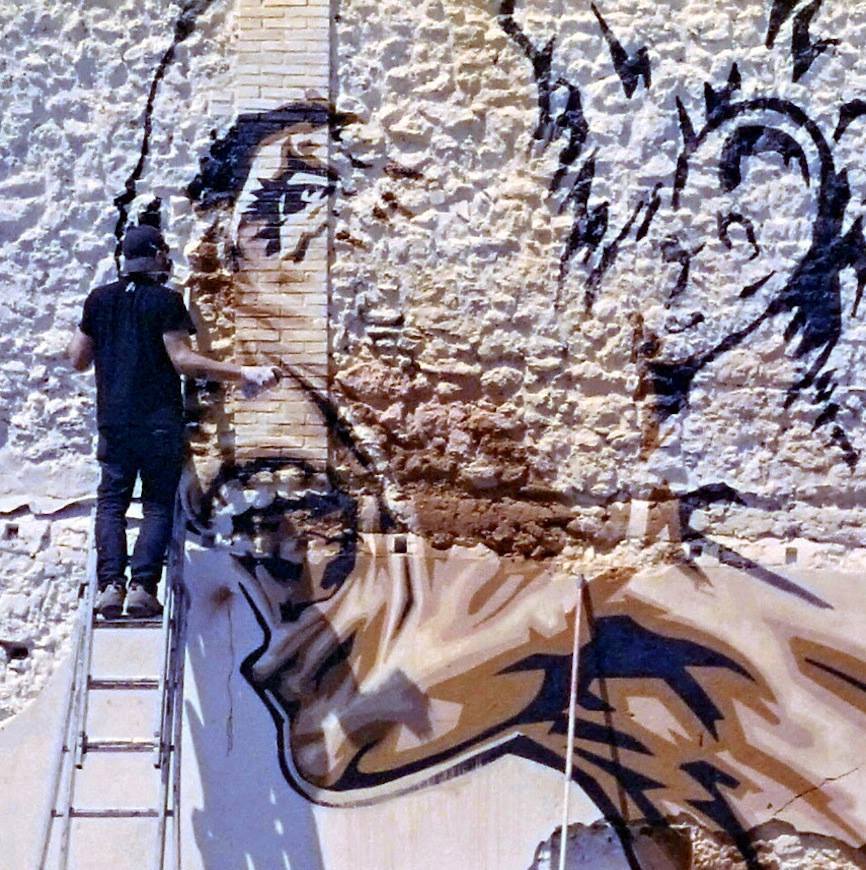
RNST is a french artist with a cause and message. He is not afraid of who will see it. LIBERTY, HUMANITY, SOLIDARITY is his motto and when you look at his art, you can truly hear the people in his work shouting it to us. Beautifully brutally honest pieces of mostly female subjects demanding to be heard and seen. This artist does not hold back and that is what I love about his work.
He does not shy away to paint those brave and strong faces onto trashcans, rocks, building walls and poster it all over Paris.
His inspiration: His opinion and thinking about his own children.
Read more about his process in the article below, dear readers.
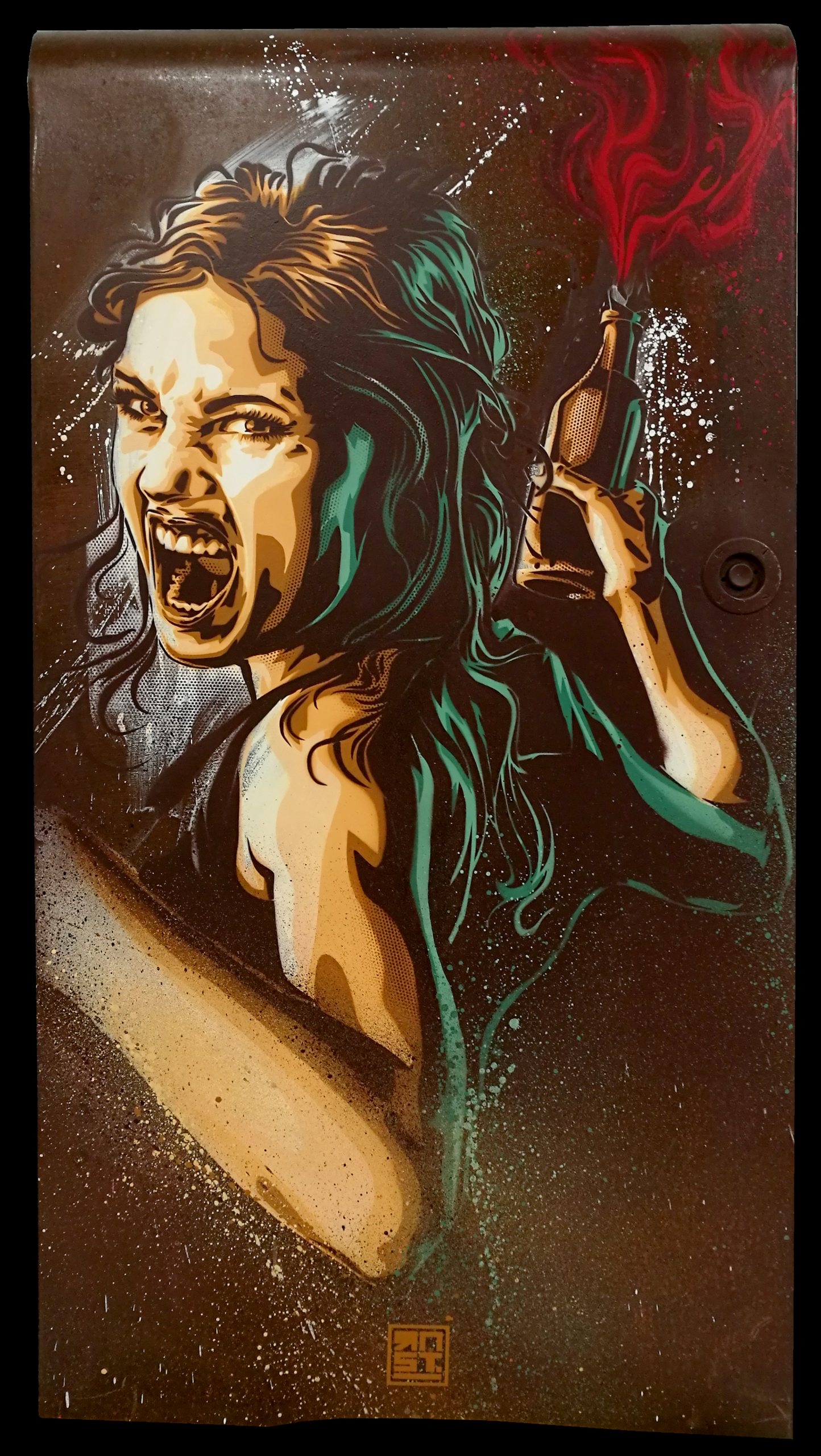
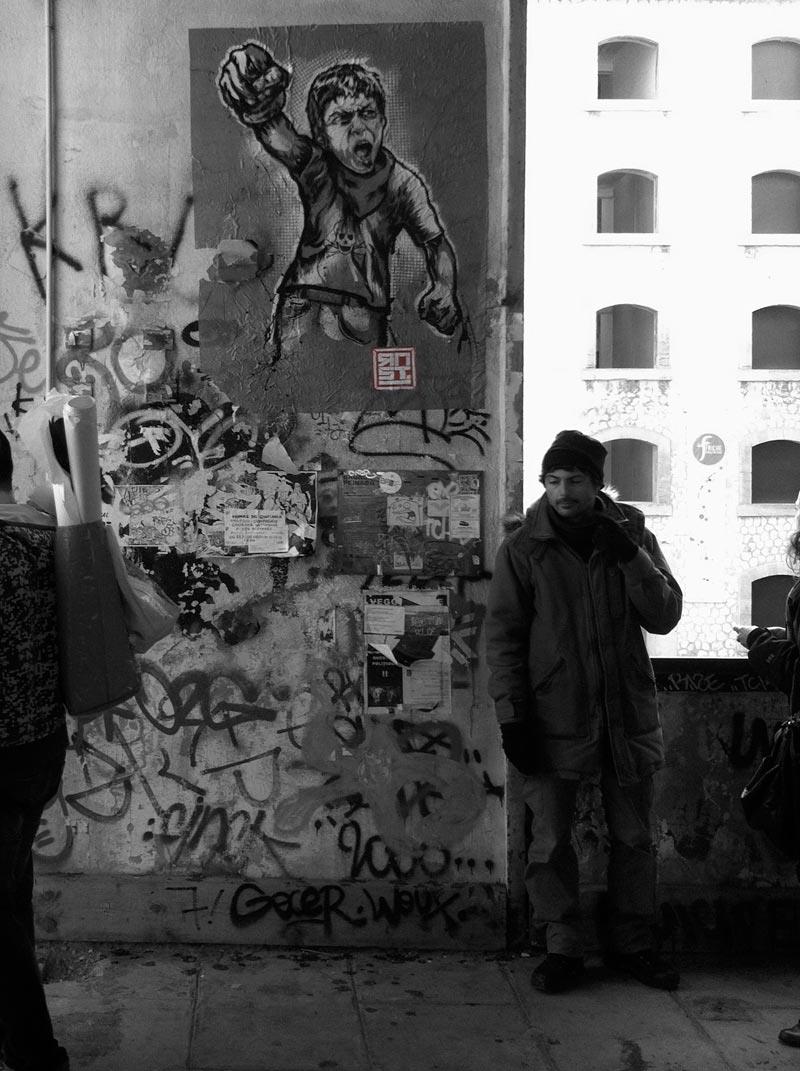
I love your art. It is powerful, strong, and unique. Who do you look up to as an artist? Who/What inspires you to do what you do?
My different sources of inspiration come first of all from Punk culture and the DY of the 80s and 90s, so the “do it yourself” played a major role in my creative processes That entire era was the beginning of a saturation of TV advertising images and from there came a kind of graphic hysteria such as Bazouka (a punk fanzine) by Lili Picasso and Loulou. They were the ones who really turned me towards a very dark and hard rock. So it turned out that stenciling was totally appropriate for that universe with its cut out aspect, its angles and incisions.
I really love Banksy’s engaged attitude and of course the effective simplicity of his stencils. And Obey for his propaganda side. And then Ernest Pignon: Ernest was the first to uphold his commitment by taking his art to the struggle in the street.
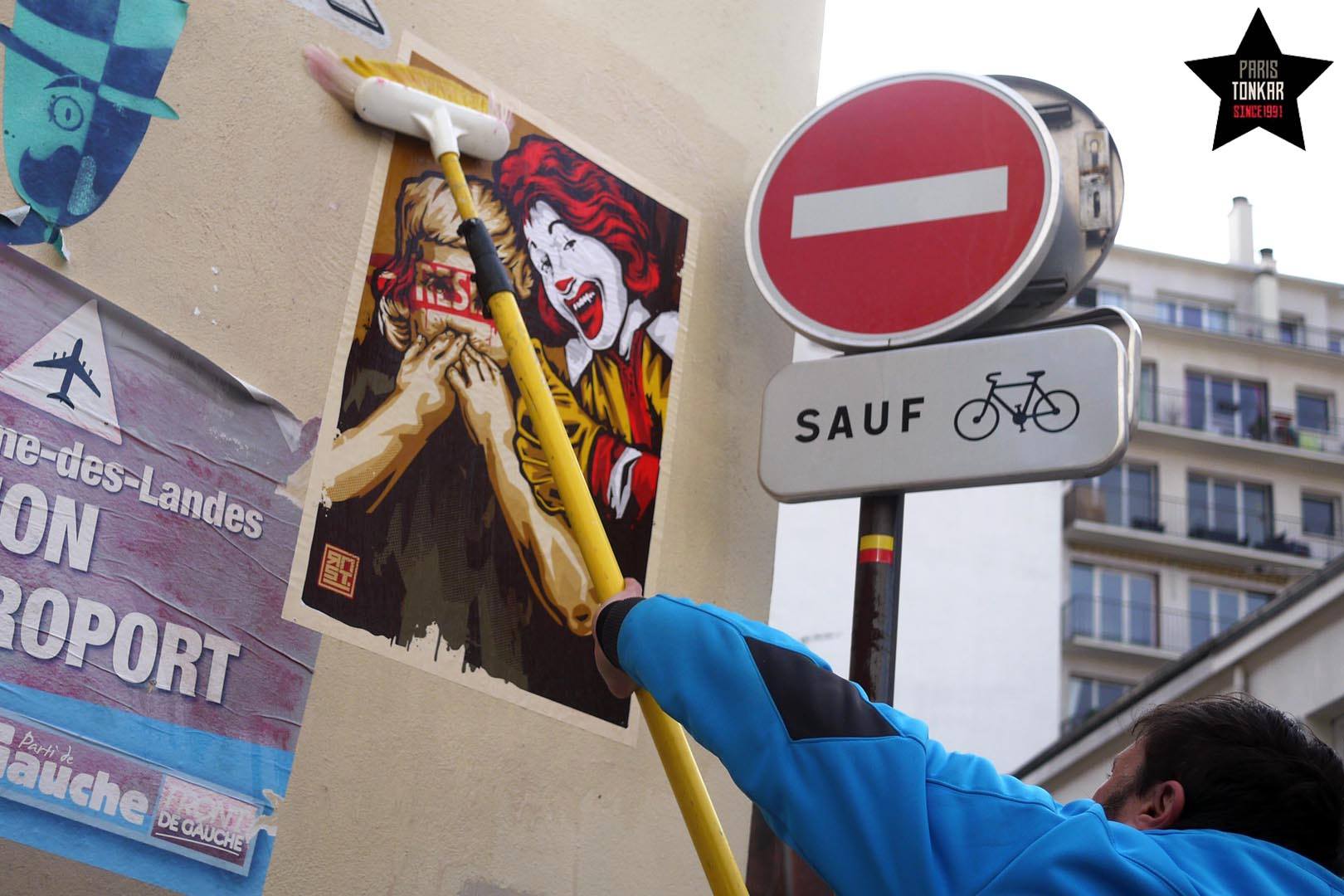
What is your process like?
I of course love all the stenciling processes because of the speed of execution like a vandal in the street. Then graffiti for its wild side where the painting includes accidents that also participate in the strong identity of a drawing but for me, silk-screening remains a good synthesis because it brings together the totality of disciplines that constitute my art. The propaganda side of posters,
The creative possibility in the street, the low cost for the public to acquire a work grants it social character and so makes it in line with my universe.
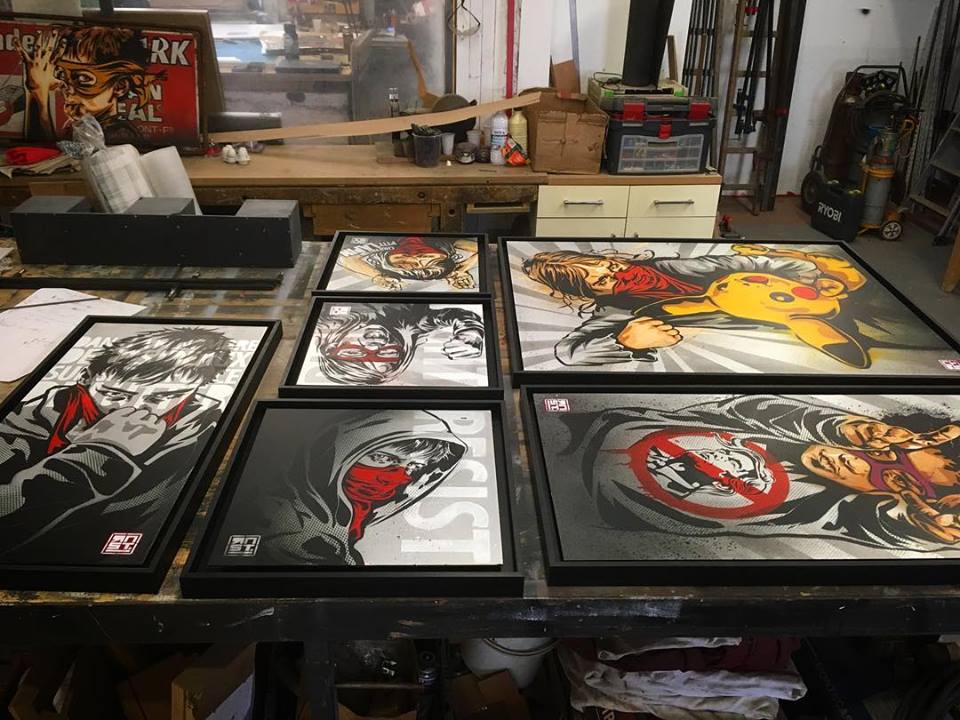
What in your opinion is special about stencil art and how does it differ from graffiti street artwork? Have you done both or is stencil always been your preferred medium?
The difference with stenciling is that one can create smaller drawings than with a fine brush and get it done quickly and discretely in the street like a vandal. Graffiti requires more courage these days where street art is fashionable and so graffiti becomes an eye sore and it’s rather complicated to get it done without running into problems with authorities.
I have practice both but for me stenciling is already useful in that it shows personages with a message. Graffiti was more a youth game for me that I continue occasionally but they are mostly letters and the codes are a little different because of the megalomania of repeating one’s name all over the world. The beauty of tracing letters is sufficient in itself and the art of painting is an commitment. But I prefer my illustrations: I feel closer to stenciling due to its nature that is more punk than hip hop (I am referring to music.)
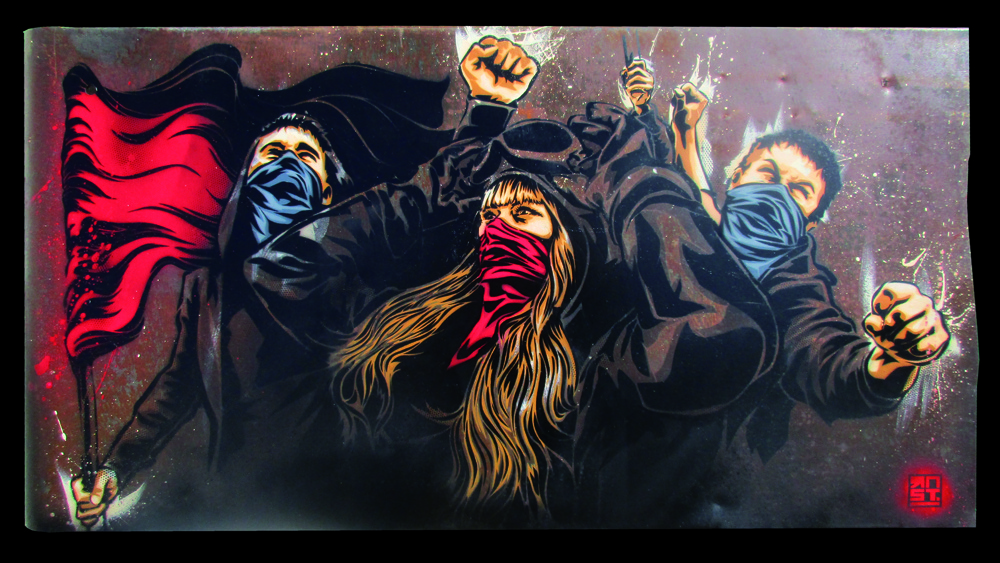

All of your pieces are very strong and convey a message or a theme about social topics for the world (Covid masks/ “Resistance”). Why is art important for society? How do you think your messages are making people think?
My goal isn’t to lecture or to impose a graphic dictatorship (though … he laughs) but to ask questions, to address [the public] with a realistic and direct drawing, often using childhood games to soften the subject matter.
I work on news themes a little like a cartoonist or caricature artist in the press: I bounce against the news and I pull out a drawing that reflects my own opinion, my thought and I share them with the world in the street.
I don’t know how my images lead people to think but through them I try to deviate [people’s] trajectories by calling out to them at a street corner they are walking by. It would be better to ask them … [He laughs.]
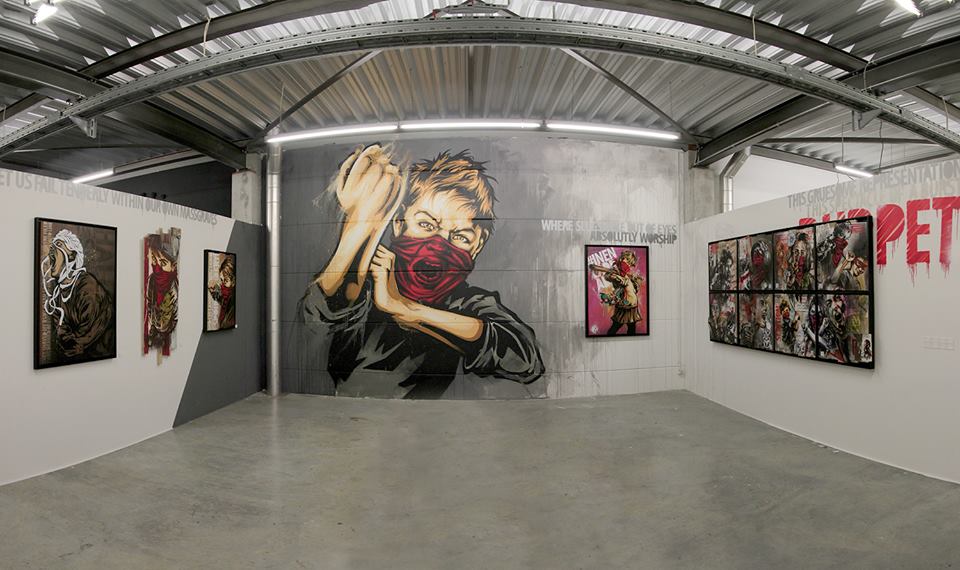
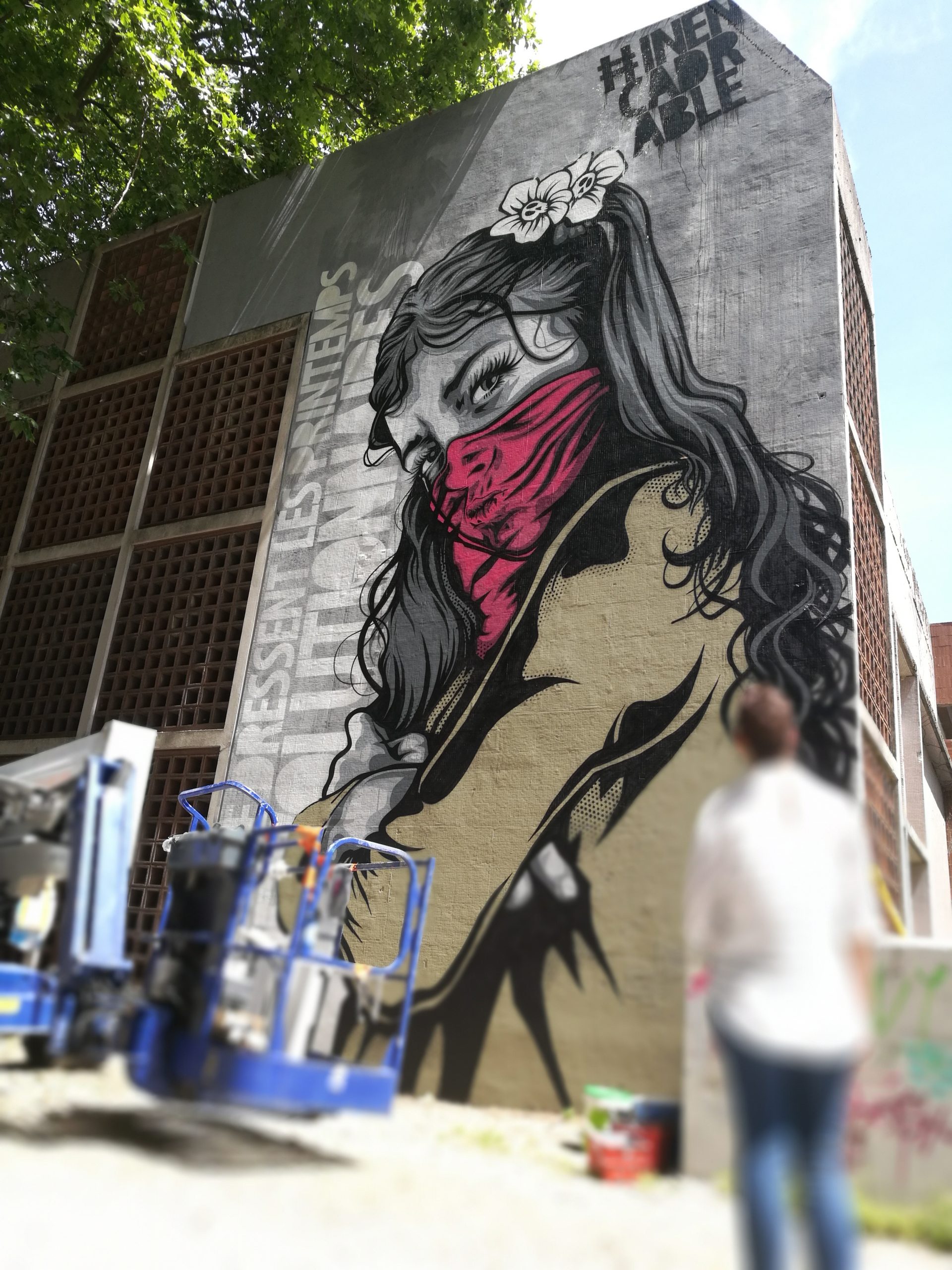
What is one of the biggest messages you want to convey to the viewers?
LIBERTY, HUMANITY, SOLIDARITY, DON’T LET GO, BE STRONG !!!

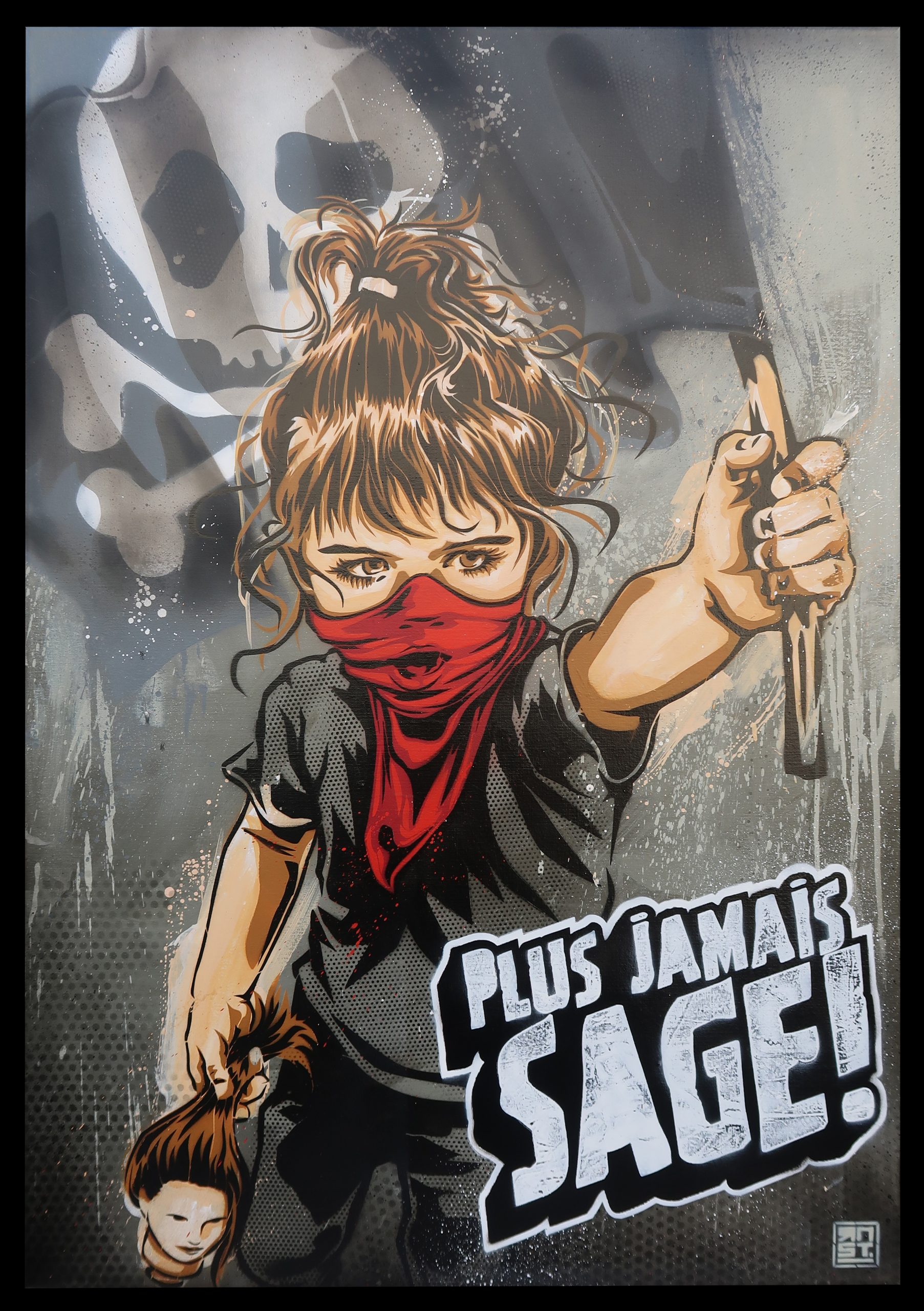
I see that many of your art pieces have younger girls as their main subject. Who is that girl to you and what do you feel when you work on your pieces?
I have a daughter and a son who are great sources of inspiration for me but the young people I draw are mostly a projection of multiple children that may have dwelt in our inner [being.] I use the images of “Poulbot” [street urchin], “Titi parisien” [Parisian street kids] to pierce the cold shell of the adult world in order to spark each one’s fragility, to help open the eyes on this sick society. What is magical in childhood is its INNOCENCE. That is why it is said that the truth comes out of the mouth of children. [French proverb.]
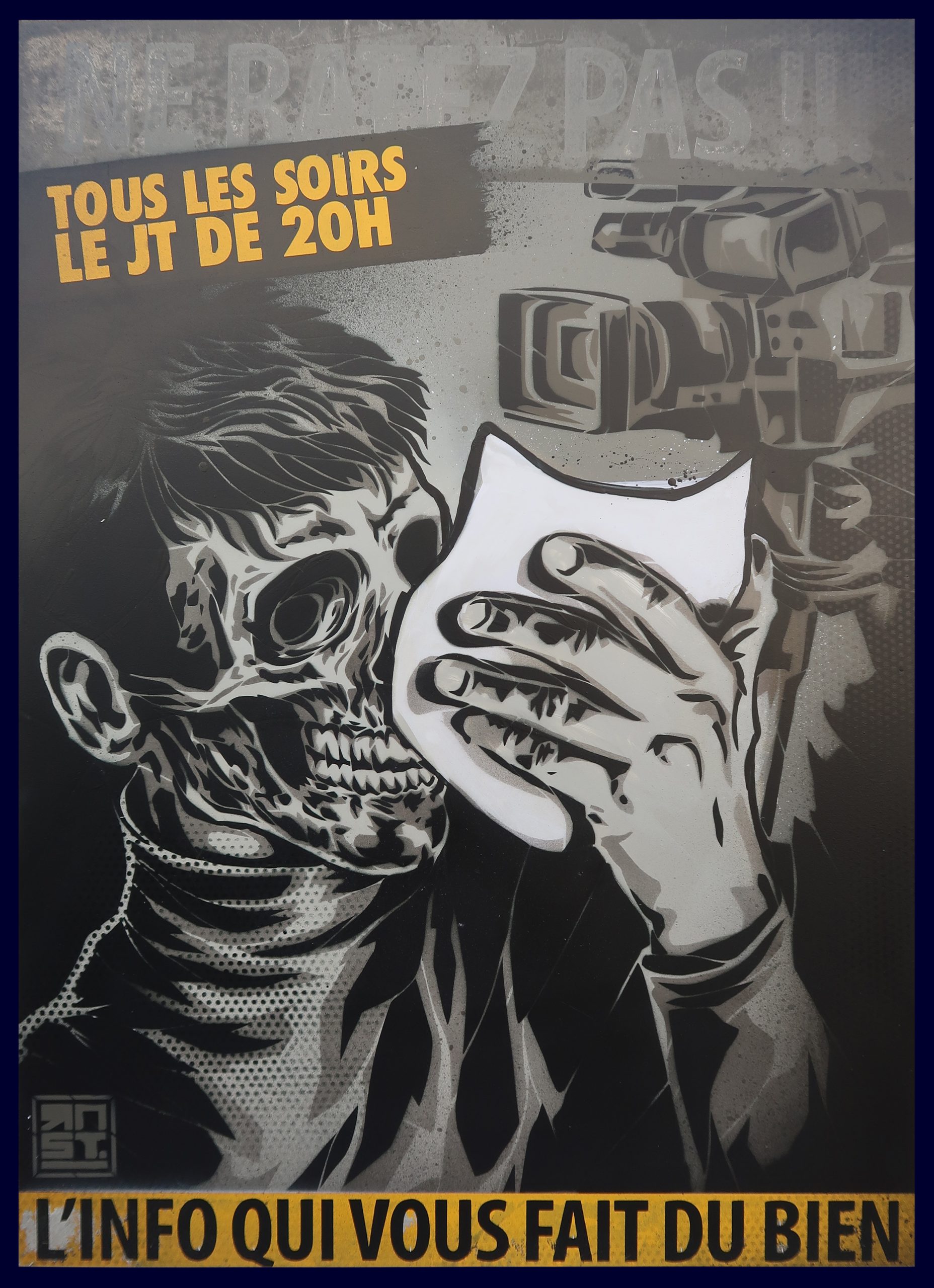
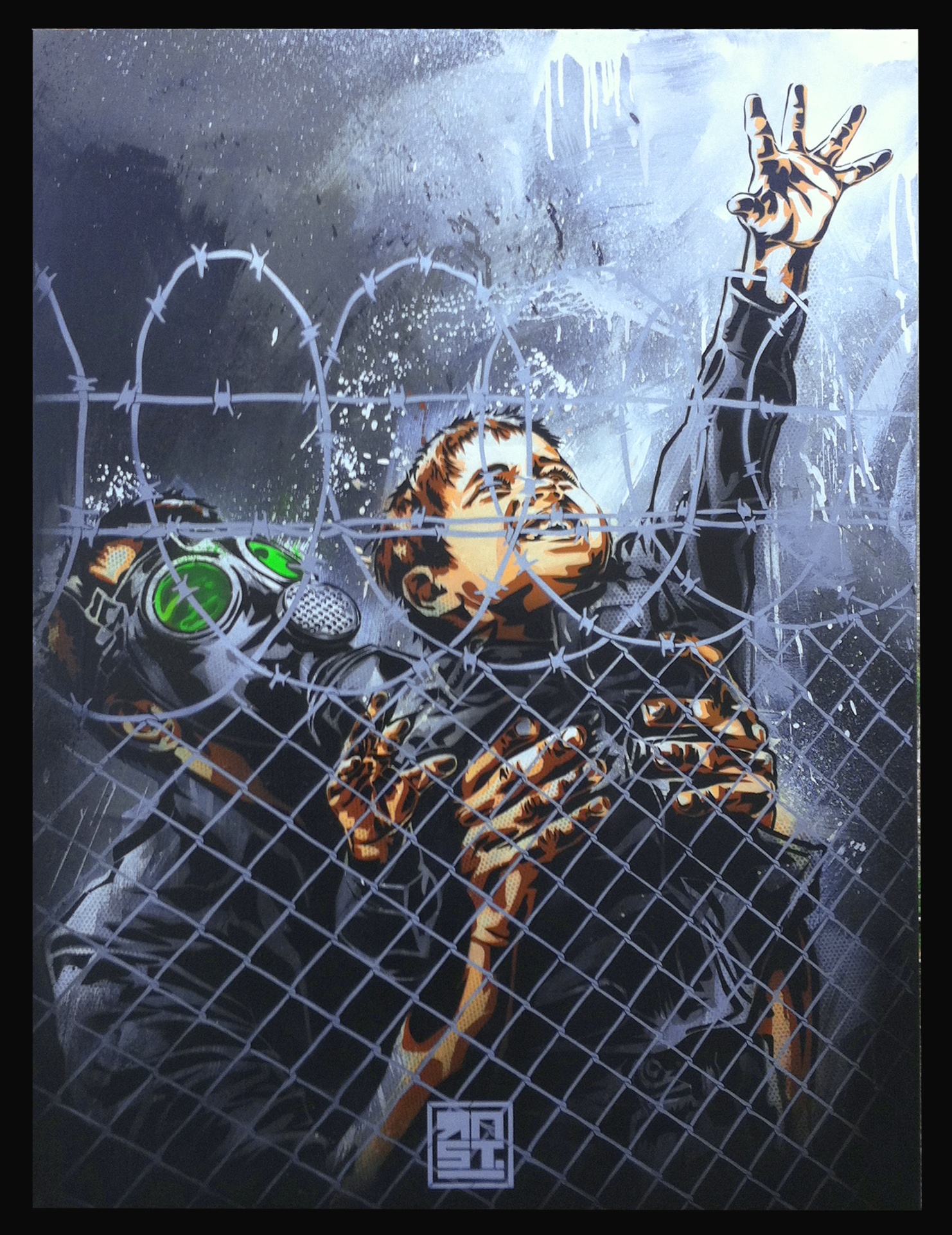
Nowadays, do young people have it easier or harder to make and be successful with their art? How dangerous can honest and controversial art be?
I know that the thing is to entirely commit to what one is doing and not let go. Urban art today is fashionable, so it’s much simpler to already consider oneself an artis when one is beginning than when I started out. At that time, street art and graffiti was left to being a popular workshop in difficult neighborhood and it played only a social role.
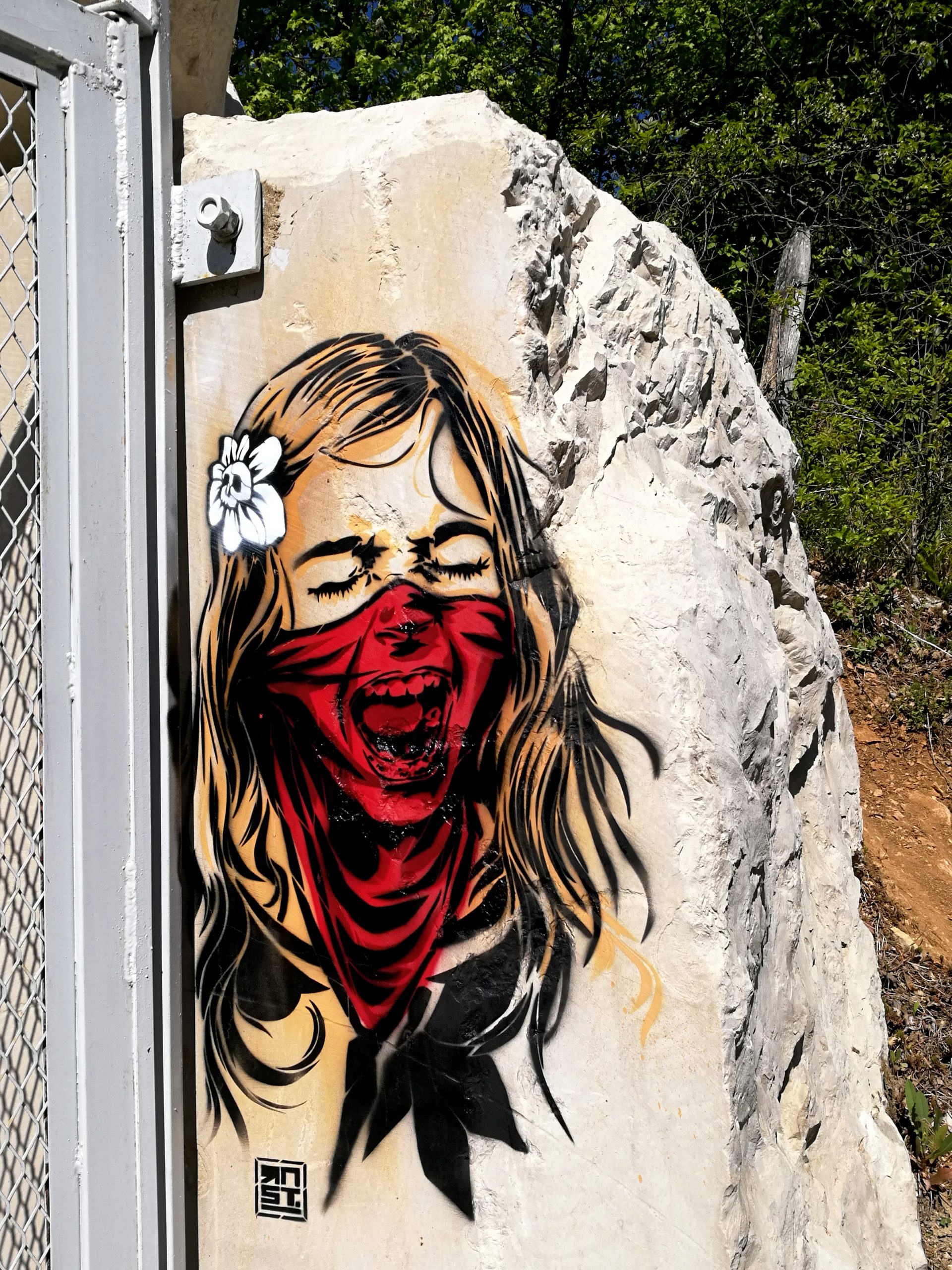
I have seen pictures of your work on trashcans, floors, walls and posters. Which is your favorite object to use?
Trash cans were mostly during the period of confinement, to be able to still paint in the street to support people like the garbage collector who were always working during the covid pandemic. “LIFE TRASH CAN” refers to a (rotten) French series that goes by the name of “PLUS BELLE LA VIE” [A PRETTIER LIFE]. I don’t have a favorite object [to work on]; the best is a wall.
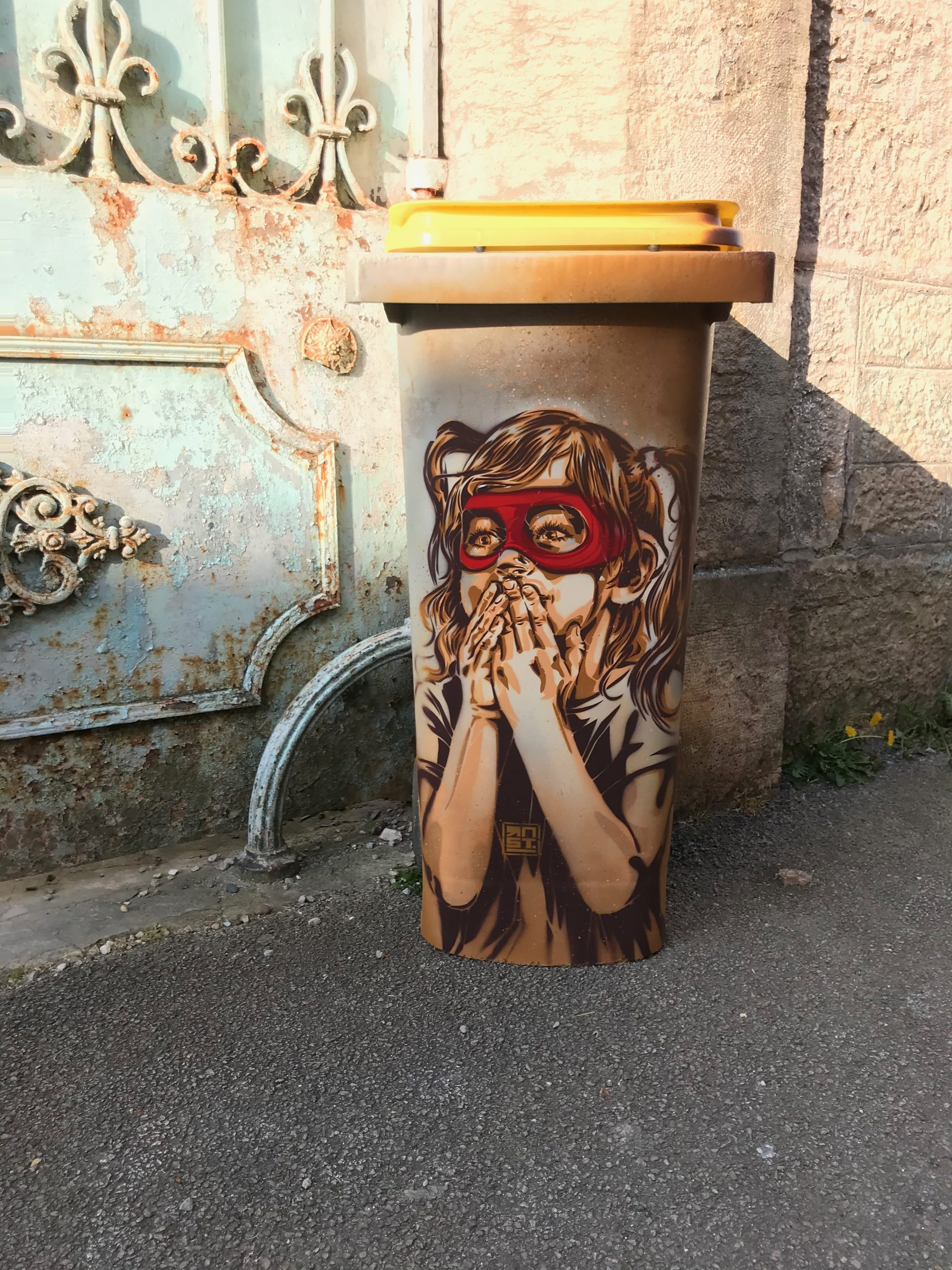
Tell us a little about your childhood and your background.
I don’t feel like it.
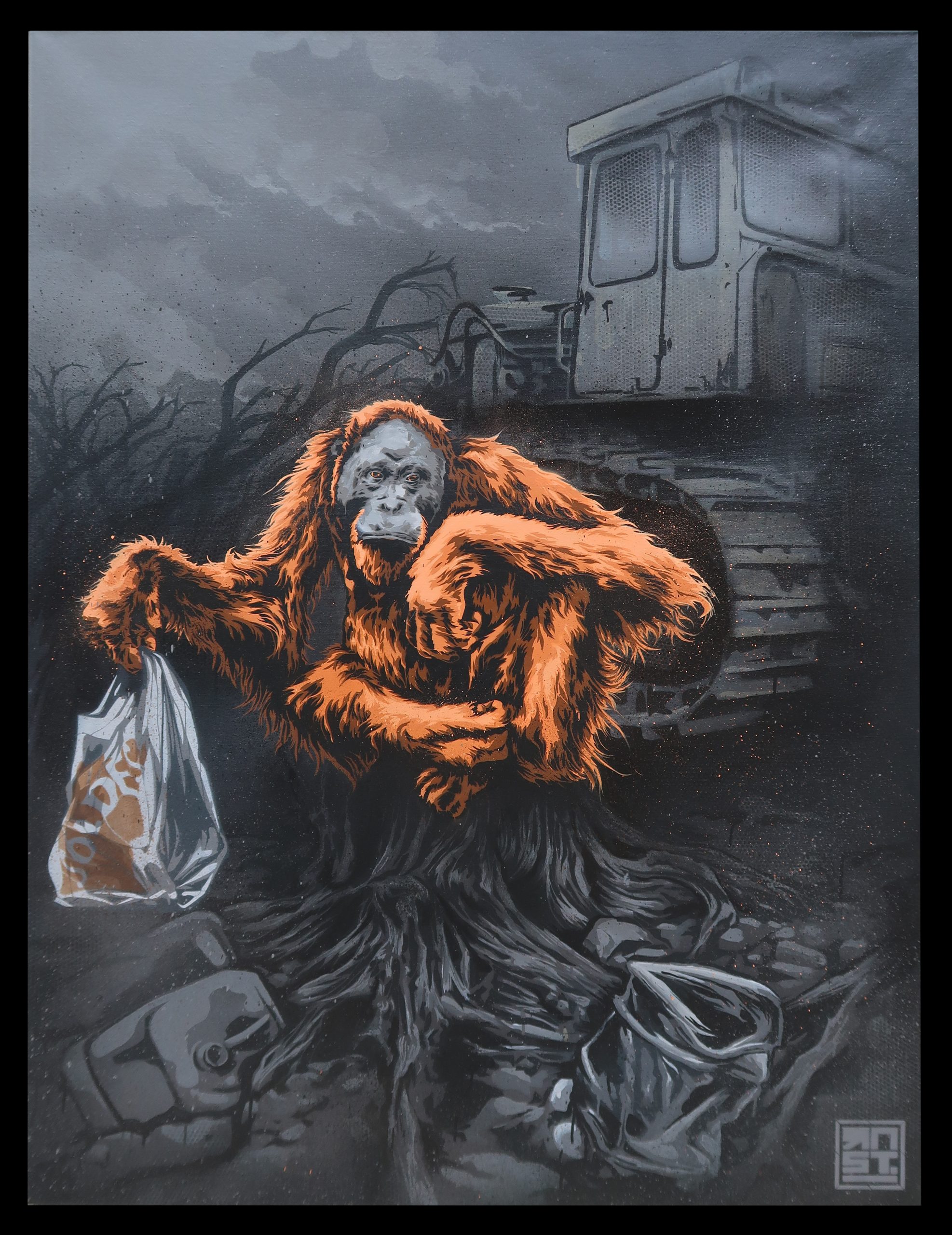
What is next for you? What are your plans for the future?
NO FUTURE.
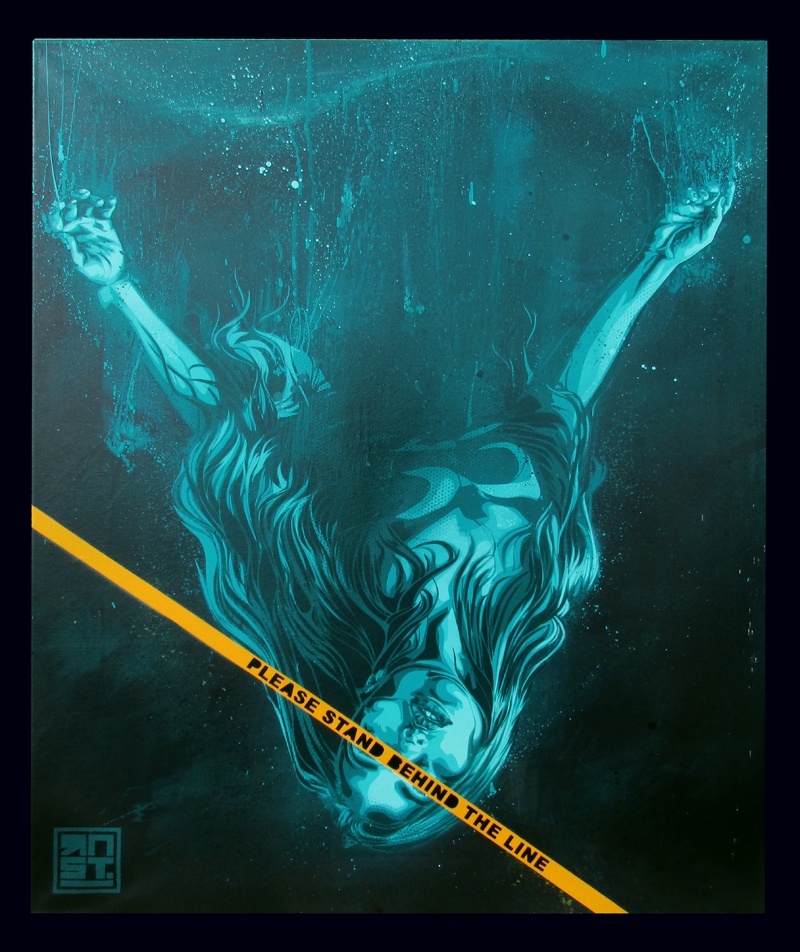
|
|

